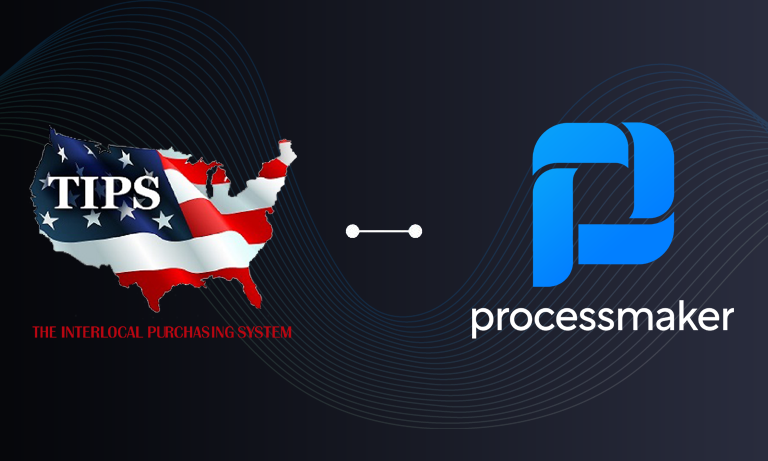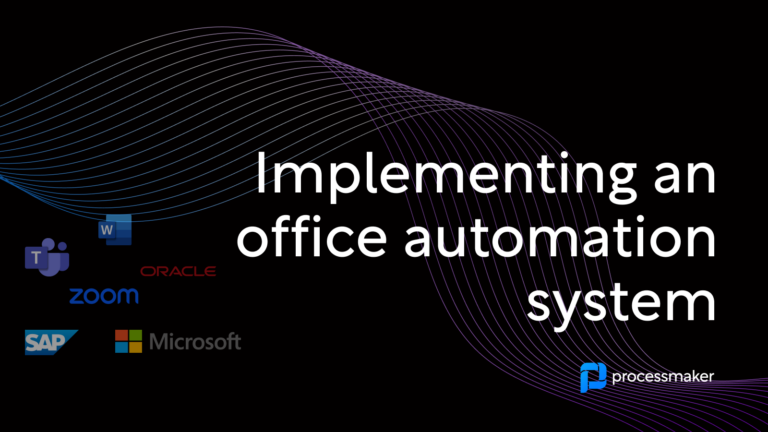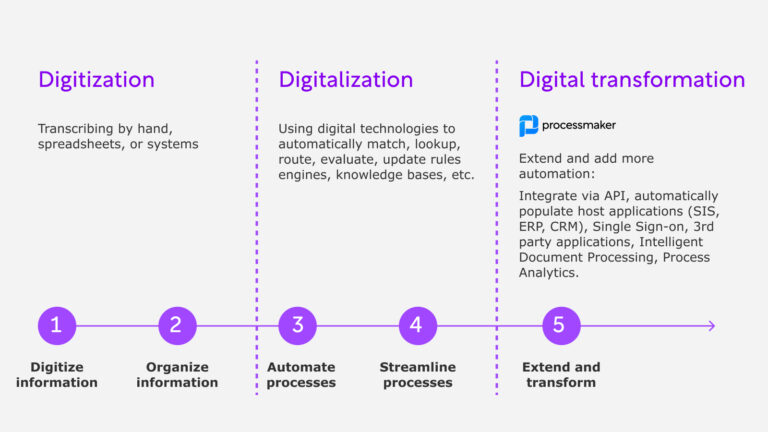The term workflow, or workflow process, has become a buzzword in the business community. While the term is commonly used, there is a lack of consensus about what it means and how it is different from a business process.
What is a workflow process?
A workflow process is a set of sequential activities that must be performed to complete a task. It is repeatable and typically linear; developed according to pre-determined actions or business rules.
A workflow process generally consists of four key components:
- Actors. The individuals or technology responsible for completing the work.
- Activities. The actions that are performed. When activities are performed in a pre-defined manner it is called an action.
- Results. The output or outcome of each step.
- State. When a project is between processes.
When people refer to a workflow process, they typically mean a visual representation. This is typically accomplished by creating a workflow diagram. Workflow diagrams take different forms, including flowcharts and value stream maps. It is possible to create a workflow diagram manually but far more efficient to create one using a workflow management system. Moreover, with a workflow management system, organizations can easily track all their workflows, identify inefficiencies, and implement improvements.
How is a workflow process different from a business process?
A workflow process focuses on the completion of a task. A business process, however, is broader and geared towards achieving an organizational objective. For example, employee onboarding is a common HR practice within many organizations. The objective is to successfully onboard the new employee. The activities required to complete this goal are a business process. A specific task such as assigning a new employee an email address is a workflow process.
10 Benefits of a workflow process
Identify inefficiencies
Creating a workflow process gives stakeholders a better understanding of an organization’s daily activities from beginning to end. They can easily identify redundancies and waste and highlight areas for improvement.
Cut costs and increase profitability
As workflow processes are standardized and work gets done faster, organizations typically discover that they require less resources. Doing more with less saves money and increases profitability.
Identify opportunities for automation
A workflow process helps organizations identify opportunities for automation. For instance, during the employee onboarding process, a new hire triggers a series of actions such as granting system access and assigning corporate assets. These time-consuming tasks can be automated, allowing HR staff to focus on higher-value tasks like training new employees.
Increase transparency
With a workflow process the duties of each job are clearly specified. Employees know what they need to do and what to expect, increasing trust and job satisfaction.
Eliminate micromanagement
Micromanagement diminishes employee performance and underutilizes employee talent. With a workflow process, employees consistently perform pre-defined tasks and complete them when they need to be finished by. Managers can spend less time micromanaging and more time making critical business decisions.
Accentuate the positive
With a workflow process, tasks can be assigned to the employees based on their strengths and unique skill sets. This improves productivity and builds employee morale.
Improve communication
With an established workflow process in place, employees know the appropriate channels of communication and where to go to get answers to their questions. Employees are more productive and have better relationships with management.
Superior customer service
Through automation, organizations can eliminate manual tasks freeing up employees to spend more time assisting customers. Moreover, organizations can streamline customer communication workflows to improve the customer experience.
Improved compliance
With established workflow processes in place, automated tasks and standardized procedures reduce human error, minimizing costly human mistakes.
Measuring performance
Without established workflows, organizations often manually collect data at the departmental level. This approach is time-consuming and prohibits a macro-level view of performance. A workflow process and workflow tools make it easy to collect, analyze, and share data within an organization to assess and improve performance.
Workflow process examples
Every organization has its own unique needs and challenges. A workflow process is not a one-size-fits all solution. The following are several workflow process examples to illustrate how you can create more efficient systems to improve your operations.
New hire
Organizations approach recruitment and the employee onboarding process differently. However, almost every new hire process begins with receiving an application. From there, the application is reviewed, and a decision made to schedule an interview or reject the application.
Following the job interview a job offer or rejection letter are sent to the candidate. Once the candidate receives the offer, he or she can either accept or reject the position. If accepted, it will trigger the next step in the onboarding process.
New customer account
New account openings have traditionally involved time-consuming manual tasks. In an industry subject to extensive regulations, such as banking, a workflow process can ensure the process moves as quickly as possible while preventing costly compliance issues.
The new customer account workflow process begins with an application. The application is evaluated, and either rejected or a request for supporting documentation is sent to the customer. The supporting documents are reviewed, and the account is either approved or rejected. If approved an account number is assigned, a bank card issued, and the customer is sent a welcome packet.
ProcessMaker provides award-winning workflow management software that helps organizations to seamlessly create, implement, and evaluate their workflow processes.





